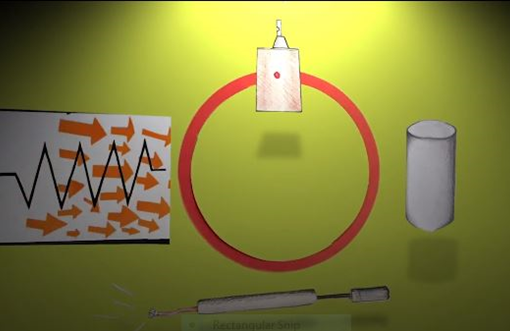1st JULY 2022 – A new idea, the Story Walk, plus a ‘Rag Bag’ of items sent to me by readers
The most efficient and least stressful way to get a good blog post together is when you start drafting mid-week. Then you can write the whole thing Thursday, review and publish in good time on the Friday and send the reminder email early Saturday. Wouldn’t it be marvellous if that could always happen? Not possible this week, unfortunately, due to the demands of not one, not 2, but 3 deadlines on 30th June.
We worked flat-out to prepare and send off a funding application, a small book for publication and an advert in a magazine for families. In this process, a new phrase of ‘Story Walk’ has appeared.
Put those two words into a search and you will discover something quite well known and popular, which began in the USA.
StoryWalk® is an innovative and delightful way for children — and adults! — to enjoy reading and the outdoors at the same time. Laminated pages from a children’s book are attached to wooden stakes, which are installed along an outdoor path. As you stroll down the trail, you’re directed to the next page in the story.
StoryWalks® have been installed in 50 states and 13 countries including, Germany, Canada, England, Bermuda, Russia, Malaysia, Pakistan and South Korea! They are always received with appreciation.
I have been toying with this phrase for some time, wanting to combine the two words, but also to ensure people realise our version is not the same. It may seem a small thing, but we cannot run the 2 words together, because that would be a conflict with the USA Registered trademark. So this is how The Meadow Barns version is portrayed on the home page:-

I will wait til next time to tell you more about the book and the summer holiday special ‘play days’ for pre-school children, because today I want to get into the topics … a rag bag of new concepts and inventions, which have been texted to me over the past few months from readers and friends. Thank you everyone for these; keep them coming!
In no particular order and certainly not chronological: –
1) Saturday 26th March, Article by John Vidal in The Guardian, interviewing ‘Amory Lovins, a highly respected guru of energy efficiency.
Amory Lovins is a leading advocate of energy conservation, practising what he preaches through having built an exceptional home, more than a mile high, in the Rocky Mountains of Colorado. Now, I lived 2 years in that part of Colorado in the 1980s, so I know first-hand how bitter it can be in winter. And I am impressed that – whilst all around him, residents were struggling with temperatures way below freezing – Lovins great construction of adobe and glass, with no heating other than daylight, was toasty. He did not lose a single one of his banana and other tropical plants, growing in the central glass tube area shown below, to frost!


Lovins wrote his first report on climate change in 1968 and in 1991 followed up with an invention he called the HyperCar concept. Built to be very light, the carbon-fibre body could do 300 miles on one electric charge. It was dismissed as a fancy then, but now all car makers are striving to match or exceed that figure. The amount of content in this article is huge and fascinating, with many punchy messages for our political leaders. I would especially like to see this next one printed in a massive font and displayed outside number 10!
The future must be in the mass retro-fitting of buildings with insulation and heat pumps and what he calls “outsolation”. “You can design out the (internal, narrow and inefficient) pipes by putting a sort of tea cosy around houses, like the Dutch Energiesprong exterior retrofit. They can super-insulate your house to net zero standard in a single day whilst you’re at work, and meanwhile they’ve dropped in a very efficient heat pump core for mechanicals, and put on a super-insulated solar roof. And when you get back, you pay them rather than your energy companies.”
2) Headline in the Express Newspaper Sunday June 5th – ‘A bit mad’ Woman builds her own solar panel powered EV for just £12,500.
A New Zealand native, Ms. Penwarden bought a 1993 wreck to act as the basis for the EV and enlisted the help of a friend, a refrigeration engineer, who assisted Penwarden in converting her automobile to electric power.
They removed the original combustion engine and replaced it with an electric motor and gearbox. Batteries were placed into the front and back of the car — 24 under the bonnet and 56 in the boot.The car is now fully road legal and is even covered by a warranty.
Rosemary, shown below, has now travelled some 23,000km (14,000 miles) in the car.

I am pretty sure one or 2 of my readers are enthusiasts for working under the bonnet of various types of old car. How do you fancy trying this? OR perhaps you already did? I would give it a go, if the right person would help me!
3) Staying with the Daily Express, we move to May 30th for news that – at first glimpse – seems to be full of promise and hope. The headline reads ‘Energy Lifeline as new 80% cheaper ‘clean gas’ can solve climate crisis in major breakthrough. A year or so of writing the blog has made me pretty skeptical when I see a claim like that. So I put into a search engine ‘Is this Kinetic 7 gas a joke?’ and found a rather more valuable piece about this from 21st cent tech https://www.21stcentech.com/kinetic-7-breakthrough-energy-source-hype-promoting-hoax/
Author Len Rosen gets to the heart of things, with a twist at the end, which really made me hoot with laughter!
Kinetic 7 is harvested from water. Doesn’t that sound like hydrogen – which can also be harvested from water and requires the use of electrolysers to separate the gas?
But Kinetic 7, unlike hydrogen doesn’t split water molecules. Instead, when an electric current is passed through water it causes molecular clustering, oxidization and friction. The end result is the process produces a reactive inert gas that is safe for domestic and commercial energy use. Voltage Enterprises is producing a plug-in device for homes, a scaled-up version for business, and a small camp stove version for Developing World and remote locations. The plug-in does the “water-to-Kinetic 7” conversion. That’s not to be confused with “water-to-wine” (as in the New Testament).
Has anyone considered in this regard, a) that it needs electric in the first place and b) that we are going to struggle to find enough water for drinking and normal consumption in the future. It seems unlikely there will enough to become our home heating fuel as well. So I definitely hesitate to tell you that Kinetic 7 is going to be something amazing. Len Rosen is similarly cautious, and ends his piece (more or less) ‘So will Voltage Enterprises and Kinetic 7 turn out to be a fictional story that evaporates under scrutiny? We will see.’
4) A report on numerous websites, including https://happyeconews.com/ announced (on May 9th) ‘A new tidal turbine generates as much power as 12 solar panels’ … to which I respond, ‘So what? Is that impressive? Not unless the solar panels are on an industrial scale, no. I mean, I have 32 panels here at Meadow Barns.
But I give this a little more attention, in case there is something good that I didn’t grasp and also because I am so keen to see more tidal turbines being used. Then I find the truth, this is not tidal … it is a light aluminium tube construction for use in a river. The development company, Idenergie in Montreal, propose this as a means to add a little supplementary power to a single home, with a tentative guarantee that it is less damaging to fish than other design types. Oh dear, I am not impressed. It looks no stronger than a baked bean can, and gets a big red cross from me.


5) We are back to Colorado for the next story, shared in the Dezeen newsletter of 7th June (Dezeen.com) and headed ‘Prometheus Materials uses algae-based cement to make masonry blocks’. It is well beyond my limited scientific and technical knowledge to understand how a low-carbon cement-like material can be grown from micro-algae, but the explanation does help – this material is grown in bio-reactors, using sunlight, sea-water and CO2, to enable reproduction in ways similar to coral. ‘Coral reefs, shells and even the limestone we use to produce cement today show us that nature has already figured out how to bind materials together in a strong, clever, efficient way’, said a Prometheus spokesman. I really like the sound of this, but it is in early stages, so I doubt will be coming to the UK any time soon.

6) Cornish Guardian, June 22nd ‘Discovery of new seagrass beds in Cornwall reignites interest in echo-sound technology.’ Last year I wrote about the first research into seagrass in Cornwall, as described here https://www.projectseagrass.org/research/project-seagrass-goes-to-cornwall/. But this June 22nd feature tells of the time in late 2021, when a whole new seagrass bed was found in Mount’s Bay, in West Cornwall, and another promisingly healthy and productive area near Falmouth. These discoveries are exciting because seagrass is critically important for the long-term capture and storage of coastal blue carbon.
The new finds equate to 3.4% of all known seagrass areas in the UK, re-igniting interest in using echo-sound technology here. The Falmouth area has been mapped by a team from University of Exeter, who I imagine would have used methods like these, taken from a Japan Fisheries academic paper on researchgate.net – We used software to discriminate seagrass signals from echoes to obtain a topographic profile of the bottom without seagrass; this was then subtracted from the topography including the seagrass. We then mapped seagrass distribution, calculated seagrass volume, and estimated biomass using volume and quadrat samples. (Sorry, that is a bit mind-blowingly technical!)

It would be lovely to end with these happy stories, but I can’t, due to a headline all across the media on Thursday 30th June. Here is one report, https://thebulletin.org/2022/07/good-bad-ugly-relieved-reactions-to-the-supreme-court-decision-on-the-epa-and-climate-change/
The future of US efforts to fight climate change was, at the least, clouded significantly Thursday when the US Supreme Court ruled to limit the Environmental Protection Agency’s powers to broadly regulate power plant greenhouse gas emissions. The country’s political divisions were reflected in reactions to the 6-3 decision, with Republicans praising it, sometimes in fulsome terms.
The delight of the Right, is balanced by statements from the Left -“The Supreme Court’s ruling in West Virginia vs. EPA is another devastating decision that aims to take our country backwards,” President Joe Biden said in a statement. “While this decision risks damaging our nation’s ability to keep our air clean and combat climate change, I will not relent in using my lawful authorities to protect public health and tackle the climate crisis.”
“Just like last week’s dangerously misguided and abhorrent decisions on gun safety and abortion, the extremist MAGA Court’s ruling today in West Virginia v. EPA will cause more needless deaths, in this instance because of more pollution that will exacerbate the climate crisis and make our air and water less clean and safe”
There is nothing good about this, except a selfish thought … in the UK, despite many flaws in our current governance, we are not subject to rulings as dreadful as these.




